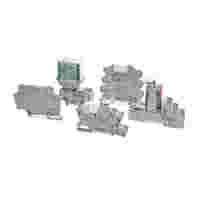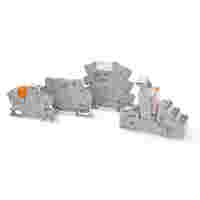Deutsche Windtechnik Steuerung continues to develop its ADLS Box, as some neighboring European countries – the Netherlands, Austria and France – are in talks about on-demand night-time marking. “Other countries have different standards and guidelines, naturally, so we have to stay on the ball,” explains Keusgen. In addition, a customer portal for operators of wind power systems is also under development.
WAGO and Deutsche Windtechnik Steuerung have worked in partnership for many years, so selecting WAGO relays to control the light signals was an obvious decision. “The design just confirmed it. Due to the clamping system, mounting is easy and fast, saving time and reducing costs. We are completely satisfied with the relays,” according to Keusgen. The uniform marking system on the relay modules also ensures a good overview. Once the electromechanical contact has reached the end of its lifespan, the pluggable elementary relay can be easily replaced during maintenance – without requiring intervention in the wiring – plug and play, as it were.
“We feel that we are well advised by WAGO, and our work dovetails nicely, Björn Ploog describes the interaction between WAGO and Deutsche Windtechnik Steuerung. In addition to the relays (Item No. 857-304), the company also uses the 2001 Series Rail-Mount Terminal Blocks in the very slender 4.2 mm version. Björn Ploog designed the DIN-rail with the rail-mount terminal blocks using the WAGO Configurator Smart Designer. He then received the DIN-rail with the rail-mount terminal blocks as fully configured components. For a renewed CE approval, Deutsche Windtechnik Steuerung is considering use of a WAGO Power Supply Unit, in addition to the relay (Item No. 857-304) and the 2001 Series Rail-Mount Terminal Blocks.


